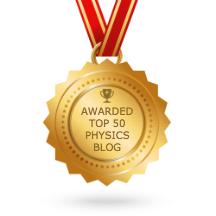Since a changing magnetic field generates an induced electric field, it is possible to stimulate nerve or muscle cells without using electrodes. The advantage is that for a given induced current deep within the brain, the currents in the scalp that are induced by the magnetic field are far less than the currents that would be required for electrical stimulation. Therefore transcranial magnetic stimulation (TMS) is relatively painless….Tony Barker was the lead engineer who developed the first useful magnetic stimulator. For this ground-breaking work, he recently received the International Brain Stimulation Award. An Institute of Physics and Engineering in Medicine news article states
One of the earliest investigations was reported by Barker, Jalinous and Freeston (1985). They used a solenoid in which the magnetic field changed by 2 T in 110 μs to apply a stimulus to different points on a subject’s arm and skull. The stimulus made a subject’s finger twitch after the delay required for the nerve impulse to travel to the muscle. For a region of radius a = 10 mm in material of conductivity 1 S m−1, the induced current density for the field change in Barker’s solenoid was 90 A m−2. (This is for conducting material inside the solenoid; the field falls off outside the solenoid, so the induced current is less.) This current density is large compared to current densities in nerves (Chap. 6).
The pioneer of Transcranial Magnetic Stimulation of the brain has become the first recipient of a new international award.According to Google Scholar, Barker’s paper “Non-invasive magnetic stimulation of human motor cortex” in The Lancet has over 3400 citations, reflecting its impact (Oops…the citation to this article in IPMB left out the word “motor” in the title; yet another item for the errata). The figure below is from Barker’s Scholarpedia article about TMS.
Professor Tony Barker, a Fellow of the Institute of Physics and Engineering in Medicine, has been awarded the International Brain Stimulation Award by publisher Elsevier.
The award acknowledges outstanding contributions to the field of brain stimulation. These contributions may be in basic, translational, or clinical aspects of neuromodulation, and must have had a profound influence in shaping this field of neuroscience and medicine.
Professor Barker, who recently retired after 38 years at Sheffield Teaching Hospitals’ Department of Medical Physics and Clinical Engineering, led the small team which developed the Transcranial Magnetic Stimulation (TMS) technique in the early 1980s.
He first started his research on using time-varying magnetic fields to induce current flow in tissue in order to depolarize neurons. Prior to this effort, direct electrical stimulation, with electrodes placed on the scalp (or other body part), was the principle method used to induce neuronal depolarization. This method, however, had several flaws and the high intensity of electrical stimulation is often painful. Magnetic fields, in contract, pass through the scalp and skull unimpeded and gives much more precise results.
In 1985, Professor Barker, together with his colleagues Dr Reza Jalinous and Professor Ian Freeston, reported the first demonstration of TMS. They produced twitching in a specific area of the hand in human volunteers by applying TMS to the motor cortex in the opposite hemisphere that controls movement of that muscle. This demonstrated that TMS was capable of stimulating a precise area of the brain and without the pain of electrical stimulation. Moreover, they did this with awake-alert human volunteers.
Today, TMS has become a vital tool in neuroscience, since, depending on stimulation parameters, specific brain areas can either be excited or inhibited. The TMS technique has evolved into a critical tool in basic neuroscience investigation, in the study of brain abnormalities in disease states, and in the treatment of a host of neurological and psychiatric conditions….
Professor Barker will receive his award at the 2nd International Brain Stimulation Conference in March, which is being held in Barcelona. He will also give a plenary lecture at the conference entitled Transcranial Magnetic Stimulation—past, present and future.
 |
| The
Sheffield group with the stimulator that first achieved transcranial magnetic stimulation, February 1985. From left to right: Reza Jalinous, Ian Freeston and Tony Barker. |






